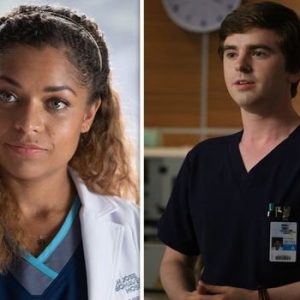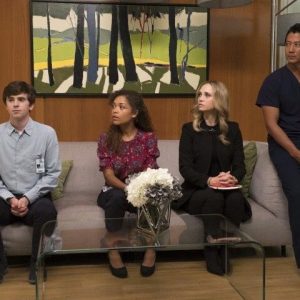In a world filled with medical jargon, hospital beepers, and high-stakes surgeries, The Good Doctor dared to do something different. It didn’t just show us how lives are saved in operating rooms—it showed us how healing happens in the quiet spaces between people. Over its moving run, the show didn’t just patch up wounds. It healed hearts. Including ours.
Led by Freddie Highmore as Dr. Shaun Murphy, a young surgeon with autism and savant syndrome, The Good Doctor set out to challenge not just the medical system but also the way we perceive empathy, connection, and vulnerability. And in doing so, it left an unforgettable impact on millions of viewers around the world.
The Medicine Was Real—but the Emotions Were Raw
Sure, The Good Doctor delivered plenty of tense surgical scenes and dramatic diagnoses. But what truly made the show stand out wasn’t what happened in the OR. It was what happened in Shaun’s eyes when he couldn’t find the words to say how he felt. It was in the quiet tremble of Lea’s voice after loss. In Dr. Glassman’s tears. In Claire’s brave smile.
Every episode treated emotional pain with the same urgency as a cardiac arrest. And that’s why we kept watching. Because it didn’t just treat medical conditions—it addressed what hurts inside. It reminded us that healing isn’t just physical. It’s emotional. It’s relational. It’s human.
Shaun Murphy: A Surgeon Who Heals with Honesty
Dr. Shaun Murphy is unlike any character we’ve seen before. He’s not trying to fit in. He’s not trying to be someone he’s not. He’s trying to be the best doctor he can be—on his own terms.
And along the way, he heals others in ways that go far beyond medicine.
Whether it’s comforting a scared child with the truth, standing up for a patient’s dignity, or telling someone he loves them even when it terrifies him—Shaun’s honesty has a way of piercing through walls people didn’t even know they had built.
And us? We weren’t just watching him grow. We were growing with him.

More Than Patients—They Were People
One of the show’s greatest strengths was how it portrayed its patients. They weren’t just tools to move the plot forward. Each patient had a story. A fear. A family. A secret. A dream.
From a young girl who wanted to go to prom before losing her battle with cancer to an elderly man who needed help facing his past before surgery, the show constantly reminded us: Behind every chart is a beating heart.
And those stories touched us. Because they weren’t just about illness—they were about life. About how fragile it is. How beautiful it is. How every moment matters.
Love That Looked Like Real Life
The Good Doctor didn’t give us picture-perfect romances. It gave us the kind of love that’s awkward, challenging, sometimes painful—but always worth it.
Shaun and Lea’s relationship wasn’t easy. It involved misunderstandings, loss, fear, and growth. But that’s what made it real. Because love, especially with neurodiverse representation, isn’t about grand gestures. It’s about learning each other’s language. Meeting halfway. Showing up when it’s hard.
Their story showed us that love isn’t perfect. But when it’s honest? It can heal even the deepest wounds.
Dr. Glassman: The Father Figure We All Needed
At the heart of Shaun’s journey was his bond with Dr. Aaron Glassman. Their relationship was raw, complicated, and deeply moving.
Glassman wasn’t just Shaun’s mentor—he was his anchor. He supported Shaun when no one else would. And when he needed support—during his cancer battle, his grief, his depression—Shaun showed up, too.
Watching their relationship evolve was like watching a father and son learn to trust each other, fail each other, forgive each other, and love each other—flaws and all. It wasn’t always pretty. But it was real. And it reminded us of the power of chosen family.
The Good Doctor never shied away from the hard stuff. It let us sit with grief. It let us feel the sting of loss. When Dr. Melendez died, we were broken right along with Claire. When Shaun and Lea lost their baby, we mourned as if it were someone we knew.
But the beauty of the show was in what came next. It didn’t leave us in the darkness. It showed us how people pick up the pieces. How they laugh again. How they find hope. How they heal.
And in a world full of quick fixes and emotional shortcuts, that kind of storytelling was a balm for the soul.





